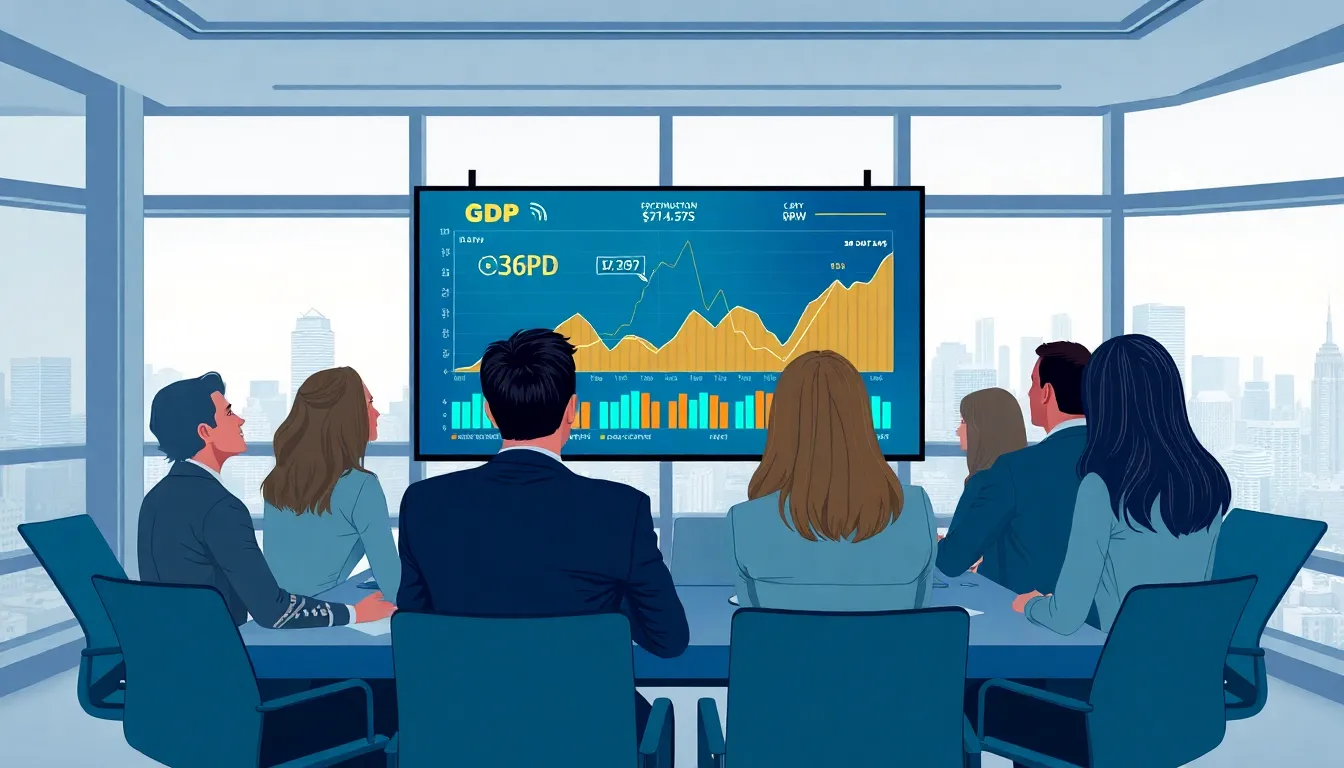In a world where coffee prices can skyrocket faster than a cat meme goes viral, understanding macroeconomic scenarios becomes essential. These scenarios are like a crystal ball for businesses and policymakers, offering glimpses into potential economic futures. Whether it’s a booming economy or a recession that feels like a bad haircut, knowing what lies ahead can make all the difference.
Macroeconomic Scenarios
Understanding macroeconomic scenarios is crucial for analyzing fluctuating coffee prices. These scenarios provide valuable insights that guide businesses and policymakers.
Definition and Importance
Macroeconomic scenarios refer to projections about the economy’s future state, encompassing variables like inflation, unemployment, and GDP growth. They serve as tools for businesses to forecast conditions, adapt strategies, and mitigate risks. Policymakers rely on these scenarios to craft effective fiscal and monetary policies. By anticipating economic fluctuations, entities can improve decision-making and enhance resilience in both growth and recession periods.
Types of Macroeconomic Scenarios
Several types of macroeconomic scenarios exist, each depicting different economic outcomes. A baseline scenario represents expected conditions under normal circumstances. An optimistic scenario highlights potential positive developments, such as rapid growth or technological advances. Conversely, a pessimistic scenario outlines adverse conditions, including economic downturns or significant disruptions. Additionally, stress scenarios simulate extreme events, testing the limits of resilience for businesses and economies. Understanding these scenarios enables stakeholders to prepare for various economic challenges effectively.
Factors Influencing Macroeconomic Scenarios

Multiple factors shape macroeconomic scenarios. Understanding these influences is crucial for analyzing potential economic outcomes.
Economic Indicators
Economists monitor various economic indicators to gauge the health of an economy. Gross Domestic Product (GDP) growth rates provide insights into overall economic performance. Inflation rates reflect changes in purchasing power and living costs. Employment figures indicate job availability and consumer confidence. Additionally, consumer spending trends highlight demand levels for goods and services. These indicators together offer a comprehensive view of economic conditions, helping businesses and policymakers anticipate future shifts. Monitoring these continuously helps in adapting strategies to navigate fluctuations effectively.
Government Policies
Government policies play a significant role in shaping economic environments. Fiscal policies, involving taxation and government spending, directly impact economic growth. Adjustments in interest rates made by central banks can influence inflation and investment levels. Regulatory measures affect business operations and market conditions. Trade policies affect international competition and domestic production. Each policy decision has a cascading effect on various sectors, ultimately influencing macroeconomic scenarios. By analyzing policy trends, stakeholders gain a clearer understanding of potential economic paths and can adjust their strategies accordingly.
Analyzing Current Macroeconomic Scenarios
Understanding current macroeconomic scenarios provides valuable insights into market dynamics. By examining global trends and regional variations, stakeholders can navigate complexities and make informed decisions.
Global Trends
Current global trends significantly impact macroeconomic scenarios. Inflation rates are rising across many nations, driven by supply chain disruptions and increased demand. Central banks respond by tightening monetary policies, adjusting interest rates to combat inflation. Additionally, geopolitical tensions influence commodity prices, affecting trade flows and national economies. For instance, tensions in Eastern Europe have led to spikes in energy prices, leading countries to reconsider their energy strategies. These interconnected trends create a complex landscape that requires continuous monitoring for accurate forecasting.
Regional Variations
Regional variations highlight how local factors shape economic conditions. In North America, labor market recovery remains robust, with low unemployment rates supporting consumer spending. Contrastingly, in parts of Europe, sluggish economic growth persists despite fiscal incentives aimed at boosting demand. Country-specific policies and cultural factors contribute to divergent economic paths. In Asia, rapid technological advancements drive growth, enhancing productivity and creating new employment opportunities. Establishing awareness of these regional differences enhances the ability of businesses and policymakers to tailor strategies that effectively address unique challenges and leverage opportunities.
Implications of Macroeconomic Scenarios
Understanding macroeconomic scenarios significantly impacts business decisions and investment approaches. These scenarios provide a framework for analyzing potential economic shifts.
Business Planning
Businesses can harness macroeconomic scenarios to fine-tune their strategic plans. Companies often assess optimism or pessimism in these scenarios to adjust their operational frameworks. Utilizing baseline projections helps in aligning budget allocations and resource management. In preparation for stress scenarios, organizations can build contingency plans to mitigate risks. A focus on key economic indicators, like consumer spending trends, directly influences product launches and marketing strategies. Employees’ engagement in scenario planning fosters a proactive mindset throughout the organization.
Investment Strategies
Investment decisions largely depend on macroeconomic conditions. Recognizing global economic trends can guide portfolio diversification and risk management. Investors often respond to inflation data and GDP growth rates, seeking opportunities that align with potential market shifts. Strategic asset allocation might involve opting for equities in a growth scenario while favoring bonds during periods of uncertainty. Tailoring investment strategies based on regional variations enhances the potential for maximizing returns. Long-term investors keep a close watch on fiscal policies to identify sectors poised for growth or resilience.
Conclusion
Understanding macroeconomic scenarios is crucial for navigating today’s complex economic landscape. By leveraging insights from various projections stakeholders can enhance their decision-making processes. Whether it’s businesses adjusting strategies or policymakers crafting effective responses the ability to anticipate economic shifts is invaluable.
As global dynamics evolve the importance of staying informed about macroeconomic indicators and regional variations cannot be overstated. This knowledge empowers stakeholders to adapt proactively to changing conditions. Ultimately the ability to interpret and respond to macroeconomic scenarios will determine success in both growth and challenging economic climates.

